Montana’s Off-the-Grid Bison Scavengers
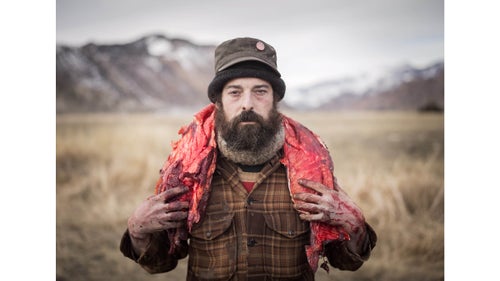
When Yellowstone National Park was created in 1872, hunting was strictly banned within it—even for the the Native Americans who had lived and hunted there for generations. It wasn’t until 2006 that the Nez Perce, Confederated Salish, and Kootenai tribes successfully petitioned the government to be able to hunt bison when they left the park and within the annually regulated cull—a federal initiative started to manage and combat bison from spreading diseases to other livestock outside the park. Every winter, groups of Native American hunters wait near Gardiner, Montana, near the park’s northwest corner, for the herd to leave the park in search of food, so the hunt can begin. Accompanying them are a group of scavengers who collectively call themselves Buffalo Bridge that live off the remains of bison from the hunt. Working with the Native American hunters, Buffalo Bridge members offer their skills and help in field dressing the animal after the kill. They are often given parts of the animal for their work. Photographer Matt Hamon spent a few days with them this winter.
Photo: Buffalo Bridge see their efforts as a way of honoring the bison through education and by utilizing as much of the animal as possible. Here, Josh assists a Native American hunter as he carries a buffalo back strap from the hunting ground.
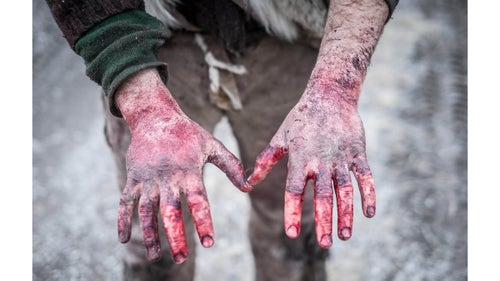
The hunt is monitored closely by tribal and state officials. In many cases, Buffalo Bridge members simply offer to help the hunters field dress the animals—a massive and laborious task—and ask for nothing in return.
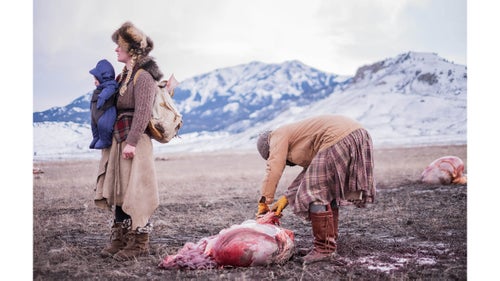
Ania pulls buffalo fat from a gut pile as Epona waits with backpack. Buffalo Bridge will occasionally be gifted a hide, bones, and even organs like the heart and liver.
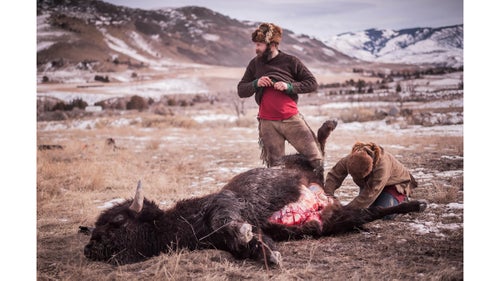
Alex and Katie assist a Native American hunter with the processing of a buffalo in the field. Buffalo Bridge members are meticulous in the way they field dress an animal. While the majority of the bison, like the one pictured here, goes home with the Native American hunters, many parts can still be boiled down or picked apart to find edible meat.
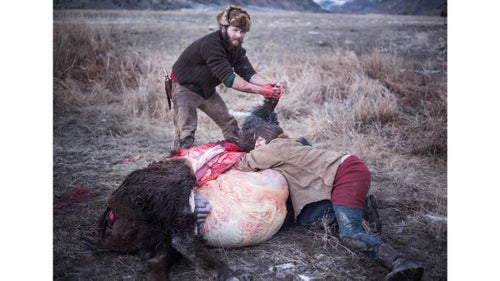
Often the animal is field dressed far from the road and members of Buffalo Bridge will help by carrying large pieces back to the Native American’s cars.
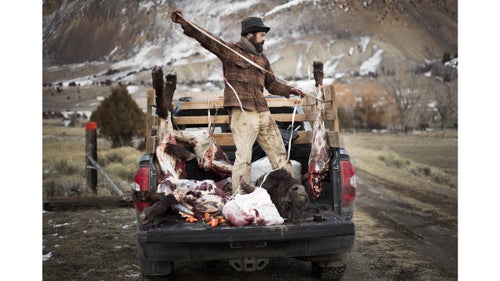
Josh loads buffalo quarters into a Native American hunter's truck.
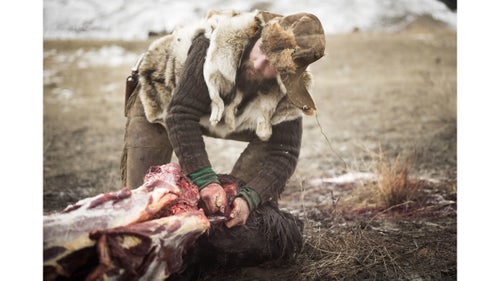
Alex scavenges a hide from a buffalo carcass. Buffalo Bridge members pride themselves on sharing knowledge associated with the process of tanning hides. Several tribal members have shared their knowledge of tanning with Buffalo Bridge as well.
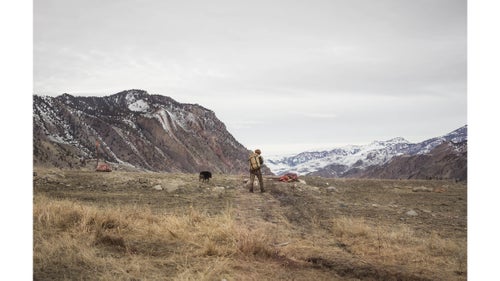
Alex approaches a gut pile as his dog, Shadow, follows. Fat, organs, and other animal parts commonly left behind by most hunters today remain valuable to Buffalo Bridge as food, clothes, and for crafting utilitarian objects. Horns can be used to make spoons and bones can be made into a variety of items including needles and knives.
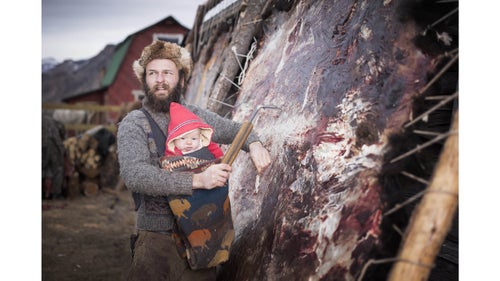
Alex carries his son as he works at fleshing a hide for tanning.
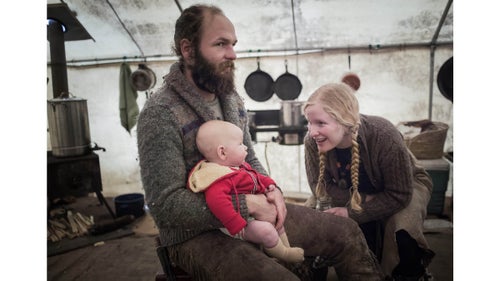
Alex, Epona, and their son relax in a wall tent after a day of scavenging buffalo parts. Buffalo Bridge sets up a tent camp on a landowner’s property near Gardiner, Montana for the duration of the annual hunt.